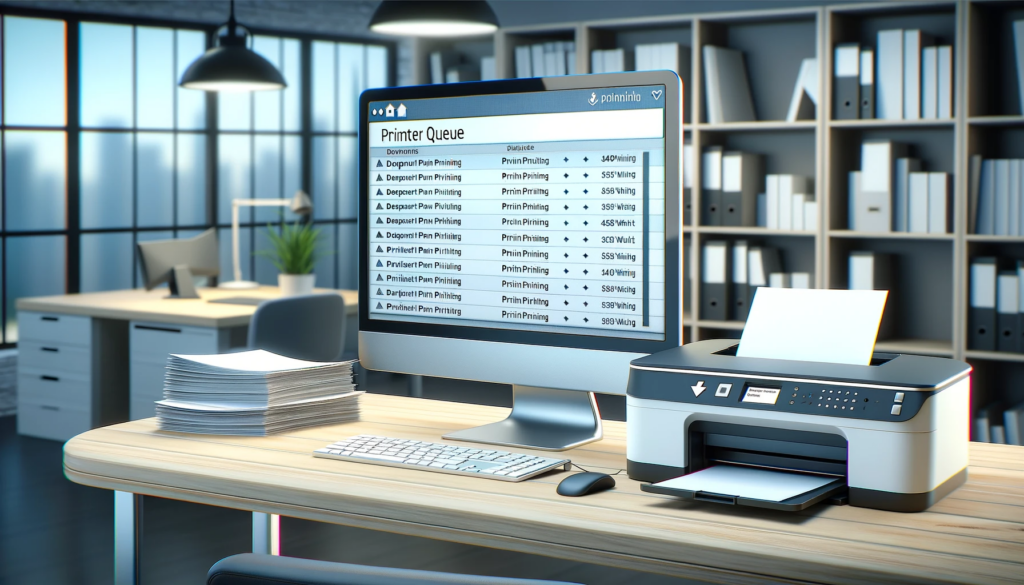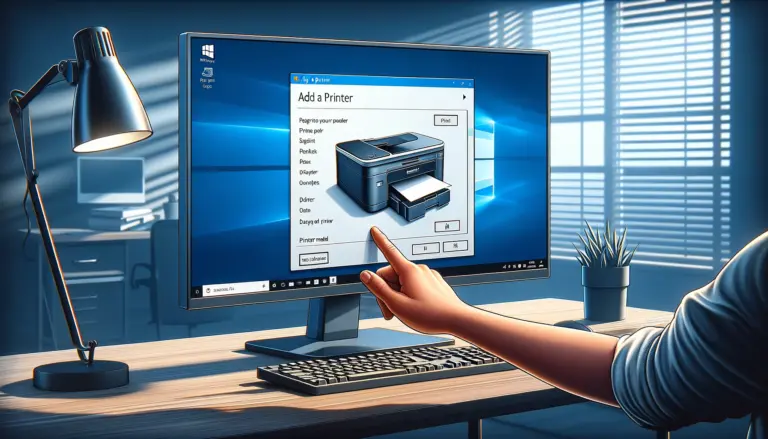Removing a printer from Windows 10 is a task that users may need to undertake for various reasons. Whether it’s part of troubleshooting efforts, replacing an old device with a new model, or simply clearing out unused printers to declutter the devices list, the process is crucial. Proper removal is essential not only to free up space but also to maintain the system’s stability and performance. This guide will explore the importance of this process and provide insights into doing it correctly.
Table of Contents
Understanding Printer Removal in Windows 10
Why Remove a Printer?
There are several reasons to remove a printer from Windows 10:
- Troubleshooting: Eliminating potential conflicts with printer drivers can resolve printing issues.
- Upgrading: Replacing an outdated printer with a newer model.
- Decluttering: Removing unused printers from the system to simplify device management.
Challenges in Removing Printers
Removing a printer from Windows 10 might seem straightforward, but users often encounter challenges:
- Driver Persistence: Even after a printer is removed, its drivers can remain on the system, potentially causing conflicts or consuming resources.
- Access Rights: In some cases, administrative privileges are required to remove a printer, posing a hurdle for users without such access.
- Reappearance Issues: Printers might reappear after being removed, due to Windows’ feature of automatically detecting and installing printers.
- Stuck Print Jobs: Print jobs stuck in the queue can prevent the removal of a printer, requiring the user to clear these jobs manually.
- Registry Entries: Advanced users might find that removing a printer from the system’s interface doesn’t delete associated entries in the Windows Registry, leading to clutter and potential errors.
Understanding these challenges is the first step towards effective troubleshooting and ensuring a smooth removal process.

Step-by-Step Guide to Remove a Printer
Through Settings Menu
To remove a printer from Windows 10 through the Settings menu, follow these steps:
- Navigating to Settings: Press the Windows key and select the gear icon to open Settings. Alternatively, you can press
Win + Ion your keyboard. - Selecting Devices: In the Settings window, click on “Devices.” This section houses all device-related settings, including those for printers and scanners.
- Removing the Printer: Scroll down to the “Printers & scanners” section. Click on the printer you wish to remove, and then select “Remove device.” Confirm the action if prompted. This method is straightforward and recommended for most users as it cleanly removes the printer from the system.
Using Control Panel
For those who prefer the traditional Control Panel:
- Accessing Control Panel: Press
Win + Rto open the Run dialog, typecontrol panel, and press Enter. - Finding the Printer: Navigate to “Hardware and Sound” > “Devices and Printers.” Here, you’ll see a list of all connected devices, including printers.
- Uninstalling the Device: Right-click on the printer you want to remove and select “Remove device.” Confirm any prompts to complete the removal. This method is useful for users who are more comfortable with the Control Panel or are using versions of Windows 10 where the Settings menu is less intuitive.
Via Print Management
Print Management is a powerful tool for users with administrative access:
- Opening Print Management: Press
Win + R, typeprintmanagement.msc, and hit Enter. This opens the Print Management console. - Locating the Printer: In the Print Management window, go to “All Printers” to find the list of printers installed on your computer.
- Completing Removal: Right-click on the printer you wish to delete and select “Delete.” This method is particularly effective for removing drivers and printer queues that are not easily removed through other methods.
Command Line Methods
For advanced users, the Command Line offers a way to remove printers:
- Utilizing CMD or PowerShell: Open Command Prompt or PowerShell as an administrator. You can do this by searching for CMD or PowerShell, right-clicking on the result, and selecting “Run as administrator.”
- Commands to Remove Printer: Use the following command to list all printers:
Get-PrinterThen, to remove a printer, use:
Remove-Printer -Name "Printer Name"Replace “Printer Name” with the actual name of the printer you want to remove. This method allows for quick removal and is especially useful for scripting or batch removals.
Each of these methods provides a different approach to remove a printer from Windows 10, catering to various user preferences and scenarios. Whether you prefer the graphical interface of the Settings menu and Control Panel, the comprehensive control of Print Management, or the efficiency of Command Line tools, Windows 10 offers multiple pathways to achieve the desired outcome.
Advanced Troubleshooting Techniques
Clearing Print Spooler Files
When you cannot remove a printer from Windows 10 using standard methods, clearing the print spooler files might help. Here’s how to do it:
- Stopping the Spooler Service: Open Command Prompt as an administrator and type
net stop spoolerto stop the service. - Deleting Spooler Files: Navigate to
C:\Windows\System32\spool\PRINTERSand delete all files inside the folder. This requires administrative privileges. - Restarting the Service: Return to Command Prompt and type
net start spoolerto restart the service. This clears the print queue and can help in removing the printer.
Removing Printer Drivers
Old or unused printer drivers can cause issues. Here’s how to remove them:
- Accessing Print Server Properties: Open Control Panel, navigate to “Devices and Printers,” right-click on any printer, and select “Print server properties.”
- Deleting Unused Drivers: Go to the “Drivers” tab, select the printer driver you wish to remove, and click “Remove.” Choose “Remove driver and driver package” and confirm. This action deletes the driver from your system, potentially resolving conflicts.
Editing the Registry
Warning: Editing the Windows Registry can have serious consequences if done incorrectly. Always back up the registry before making changes.
- Precautions Before Editing: To back up, open Registry Editor, click “File” > “Export,” and save the registry file.
- Navigating Registry to Remove Printer Entries: Press
Win + R, typeregedit, and navigate toHKEY_LOCAL_MACHINE\SYSTEM\CurrentControlSet\Control\Print\Printers. Find the printer you wish to remove, right-click on its folder, and select “Delete.” This method should be used as a last resort and only if you’re comfortable making changes to the registry.
These advanced troubleshooting techniques can help when you’re unable to remove a printer from Windows 10 through conventional methods. Proceed with caution, especially when making changes to the system’s registry.
FAQs
How do I force remove a printer in Windows 10 that won’t delete?
To forcefully remove a stubborn printer in Windows 10, you can use the “Print Management” tool or execute the printui /s /t2 command. Access Print Management by searching for it in the start menu, locate the troublesome printer under “All Printers,” and delete it. Alternatively, open Command Prompt as an administrator and type printui /s /t2 to open the Printer Server Properties window, where you can remove the printer.
Why can’t I remove a printer in Windows 10?
Several issues can prevent the removal of a printer in Windows 10, including:
– Active print jobs in the queue.
– Lack of user permissions.
– Printer driver conflicts.
– Ensure all print jobs are cleared, you have administrative rights, and try removing the printer again. If driver issues are suspected, use the device manager or print management to uninstall the drivers.
What should I do if the printer keeps reappearing after removal?
If a printer reappears after you remove it from Windows 10, check the following:
– Ensure Windows is not set to automatically install printer drivers.
– Uninstall any related printer software.
– Consider temporarily disabling the Print Spooler service to prevent automatic reinstallation. Reactivate the service after you have completed the removal process.
Can removing a printer affect other devices?
Removing a printer from Windows 10 should not impact other devices. However, it’s wise to check device connections and settings to ensure no shared services or software could be affected. Always proceed with caution and ensure backups are made when necessary.
Conclusion
This article has walked you through the necessary steps and considerations for removing a printer from Windows 10. From simple methods through the Settings menu to more advanced troubleshooting techniques, it’s crucial to follow these guidelines carefully. Remember, while advanced methods like registry editing can resolve persistent issues, they should be approached with caution. If you encounter difficulties, don’t hesitate to seek professional assistance.
List of Resources
- Official Microsoft Support Links: Microsoft Support
- Troubleshooting Tools: Microsoft Troubleshooter
- Community Forums for Additional Help: Microsoft Community

